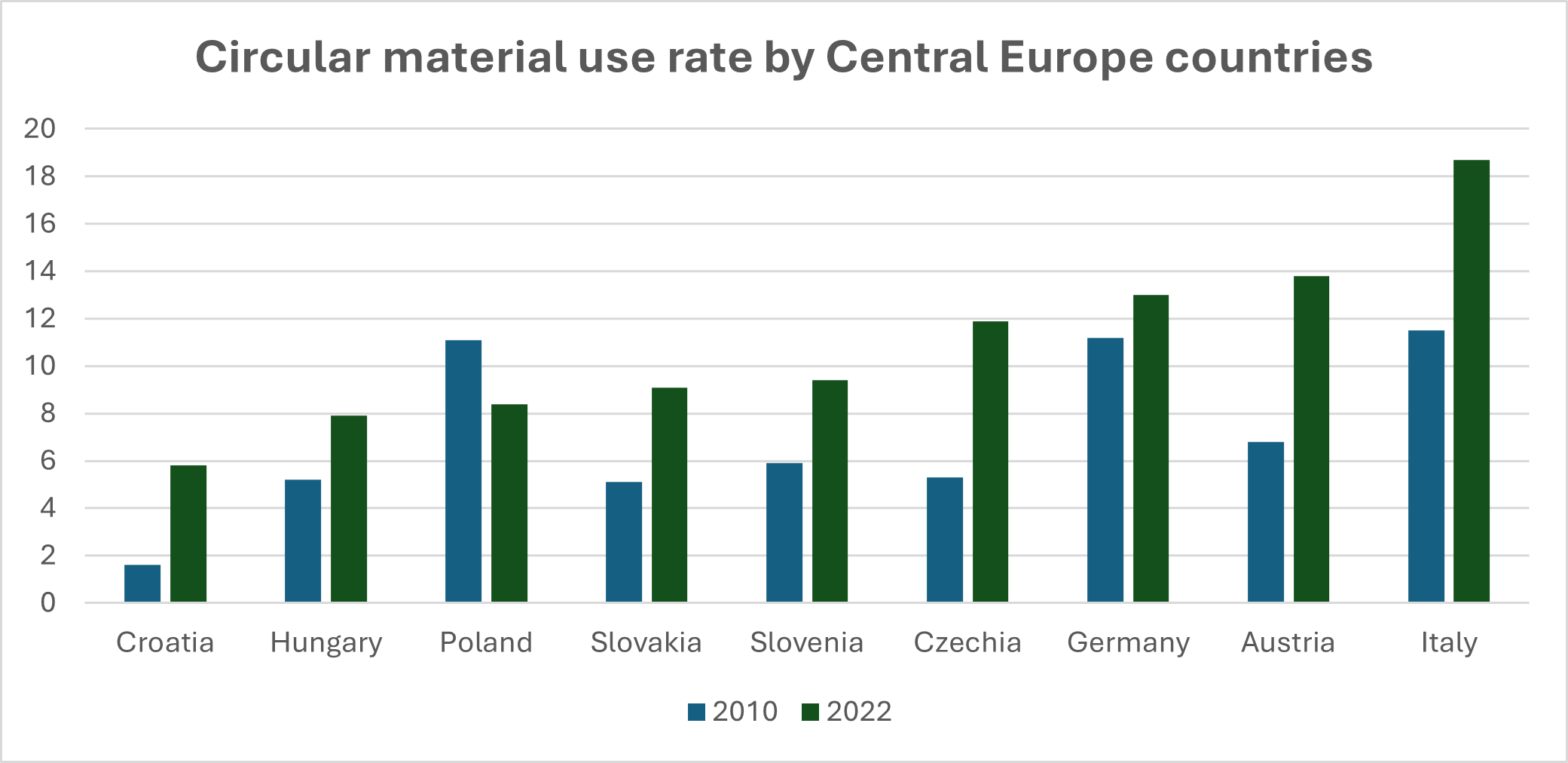The EU aims to double its use of recycled material, in terms of its share in the total amount of material used by the economy, between 2020 and 2030, as set out in the circular economy action plan. Increasing the use of secondary materials reduces the extraction of primary raw materials and related environmental impacts. In 2022, recycled material accounted for 11.5% of material used, an increase of less than one percentage point since 2010. This rather slow progress, together with projections for increased material demand in the EU by 2030, signify that the EU is not on track to double the circular material use rate by 2030.
The EU’s circular economy action plan aims to reduce pressure on natural resources and states that the EU aims to double its circular material use rate (CMUR) in the coming decade. The CMUR indicates the circularity of materials in the economy and refers to the share of the total amount of material used in the economy that is accounted for by recycled waste.
Increasing the CMUR — either by increasing the amount of recycled waste or decreasing the amount of material used — would reduce the amount of primary material extracted for production and the associated negative impacts on the environment and climate. Moreover, a reduction in the EU’s reliance on primary resources, including imported materials, would increase its strategic autonomy, as the EU would increase its ability to meet its own needs, without relying on countries outside the EU.
Although the EU’s CMUR has increased slightly in the past decade, from 10.7% in 2010 to 11.5% in 2022, it is still considered low. This trend is explained mainly by increases in the amount of waste recycled, while domestic material consumption has remained rather stable.
Circular economy strategies, by aiming to retain the value and extend the life of products, can reduce resource consumption and consequently reduce impacts on the environment and climate. Meeting the target of doubling the CMUR would mean an increase from 11.5% in 2022 to 23.2% by 2030. This requires the average CMUR annual compound growth rate to be 20 times higher in the remaining period to 2030 compared to that of the past ten years. This is rather unlikely, considering an increase of less than one percentage point in the CMUR during 2010-2022, including stagnation since 2017, and projections by the OECD predicting an increased future demand for materials in the EU by 2030. The latter is important as increasing recycling alone will not allow the EU to achieve the target. Increased recycling coupled with reduced material use is required. Reducing the use of heavier material groups like non-metallic minerals and metals has a greater potential for increasing the CMUR. However, since material extraction has different environmental impacts, measures should also focus on reducing the consumption of fossil energy materials and increasing the sustainability of biomass production in view of reducing environmental pressures.
Considerable differences in CMURs are observed among countries, ranging from 27.5% (in the Netherlands) to 0.6% (in Finland) in 2022. This reflects significant structural difference in countries’ recycling capacities and in their levels of material consumption. In the Netherlands and Belgium, more than 20% (one out of five tonnes) of material used was recycled material, while the CMUR level for the Netherlands is already higher than the EU target for 2030.
Most (20 out of 27) countries’ CMURs have increased since 2010. The largest absolute CMUR increases (more than five percentage points) were seen in Malta, Belgium, Italy, Austria, Estonia and Czechia. Some countries show impressive relative increases in their CMURs, with Latvia, Croatia, Malta, Bulgaria, Czechia and Austria more than doubling their CMURs between 2010 and 2022. On the other hand, significant decreases in CMURs were seen in Finland, Luxembourg and Romania.
At its core, the ReBuilt project aims to increase the circularity of the construction sector. But how circular are we in the countries of Central Europe?
| 2010 | 2022 | |
| Croatia | 1,6 | 5,8 |
| Hungary | 5,2 | 7,9 |
| Poland | 11,1 | 8,4 |
| Slovakia | 5,1 | 9,1 |
| Slovenia | 5,9 | 9,4 |
| Czechia | 5,3 | 11,9 |
| Germany | 11,2 | 13 |
| Austria | 6,8 | 13,8 |
| Italy | 11,5 | 18,7 |
Source: EUROPEAN ENVIRONMENT AGENCY, Circular material use rate in Europe, published 02. feb 2024
